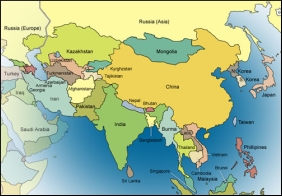|

|
Asia's export-driven economies face slowdown in 2009
|
|

|
|
| Top Stories |
 |
|
|
|
Yearender - 2008
There's an old saying among economists, 'When the US catches a cold, the rest of the world catches pneumonia.'
'But nobody says what happens when the US catches pneumonia,' said Ammar Siamwalla, a Thai economist. That indeed is the billion-dollar question for Asia in 2009.
Most of Asia's dynamic emerging economies have been using exports as their engines of growth for the past decade or more. If anything, the region became even more export-dependent in the aftermath of the 1997 Asian financial crisis, Asia's version of the meltdown that is now shaking the advanced economies.
Thailand, for instance, depended on exports for about 40 percent of the gross domestic product (GDP) prior to the 1997 crash, but this has shot up to about 60 percent of the GDP now.
'The export orientation is going to hurt us a lot,' said Ammar.
It is going to hurt the entire Asian region. The US financial meltdown and resulting recession, which has spread to Europe and Japan - engulfing the world's three biggest markets - is already taking its toll on Asian exports.
India's October exports declined year-on-year by 12.1 percent, Singapore's by 15 percent, Indonesia's by 11.6 percent and in Vietnam exports have been on the slide since July.
China's export growth slowed marginally in October, but, thanks to a greater decline in imports, the country still enjoyed a large trade surplus.
'The main body of China's economy is the export economy and the main target countries of export lie in the European Union and the US, so you will see more businesses affected next year,' Liu Kaiming, the director of the Shenzhen Institute of Contemporary Studies, told DPA.
In an effort to promote the domestic economy as exports decline, the Chinese government has promised to spend an estimated four trillion yuan ($586 billion) on 10 major programmes dominated by infrastructure projects, reduce some taxes and relax bank-lending requirements.
But anyone hoping that China's huge domestic demand will provide a new growth engine for the rest of Asia is likely to be disappointed.
'Even though China may continue to grow at 7.2 percent in 2009 it does not benefit the region,' said Hong Kong-based James McCormack, head of Asia-Pacific Sovereign Ratings at Fitch Ratings.
'As their (China's) exports go down, their imports will go down, and Southeast Asian exports will in turn go down.'
Much of China's imports from the region are for industries that re-export them as finished products to the US and Europe.
Fitch Ratings, which may be more pessimistic about Asian growth in 2009 than others, forecast the following GDP growth or decline rates for the region: Hong Kong, -1.2 percent; Singapore, -1.0 percent; Taiwan, -1.7; Thailand, +0.9; the Philippines (+2.8); Malaysia, +3.5; Vietnam, +.8; Indonesia, +4.5; India, +5.8 and China, +7.2.
Although these figures are not so bad compared with the advanced economies, they are low by the region's standards and will translate into widespread unemployment in 2009.
Most governments are turning to fiscal stimulus policies to ease credit access, create jobs and encourage domestic consumption.
China has announced its $586 billion package and well-planned Singapore has prepared a number of stimulus packages, such as 2.6-billion-Singapore-dollar loan and credit facilities for Singaporean companies.
Economic performance in 2009 will therefore depend to a great extent on the public sector, which poses a worry for countries such as Thailand presently in the thick of political turmoil.
Even with efficient political systems, there is just so much most Asian governments can hope to do next year in terms of stimulating their economies.
'On the fiscal side, typically governments in Asia are quite small, so the room to manoeuvre here on the fiscal side is less than is some other regions of the world,' said McCormack.
The exception, of course, is China, which has vast foreign exchange reserves and a huge domestic market to work with.
While the China market may save China it will not save the rest of Asia, so the region's best hope is for a rapid recovery in the US and Europe.
Even this may prove elusive.
'US growth had been led by consumers who saved nothing,' noted McCormack. 'Now the process is being reversed. Households are being forced to save because the value of their assets has gone down and if the process continues, that means that their consumption growth has to be less than their income growth, which is bad news for Asian exports.'
|
|
|
| |
|
|
|
|
|
|
|
|
|
|
|
|
|
|
| |
| Customs Exchange Rates |
| Currency |
Import |
Export |
US Dollar
|
84.35
|
82.60 |
UK Pound
|
106.35
|
102.90 |
Euro
|
92.50
|
89.35 |
| Japanese
Yen |
55.05 |
53.40 |
| As on 12 Oct, 2024 |
|
|
| Daily Poll |
 |
 |
| Do you think Indian businesses will be negatively affected by Trump's America First Policy? |
|
|
|
|
|
| Commented Stories |
 |
|
|
|
|
|
| |
|